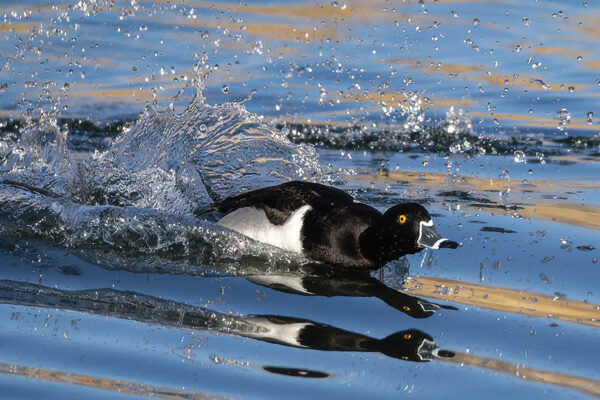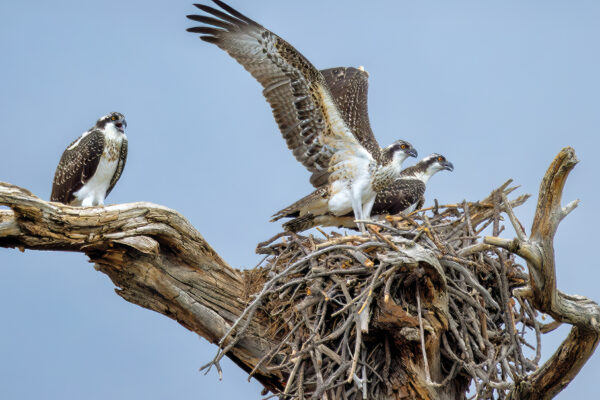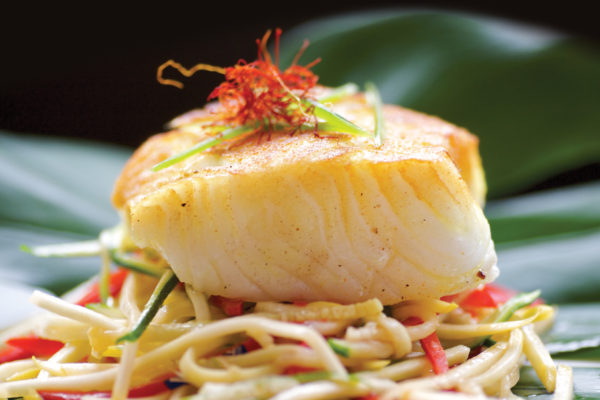I began my flying career learning how to fly gliders way back in 1996. Up until then, I had only been a passenger in commercial aircrafts. I earned my private pilot license in 90 days followed by six months of intensive aerobatic training and cross country flying. I purchased my first glider/sailplane four months after my first lesson. I earned my commercial pilot license one year after I got my private pilot license. The aerobatics training made me feel at home in the air because no matter what altitude I was in, I knew exactly how to handle the situation and with cross country training I was comfortable no matter where I was. I had no engine, and the flight depended on my skill.
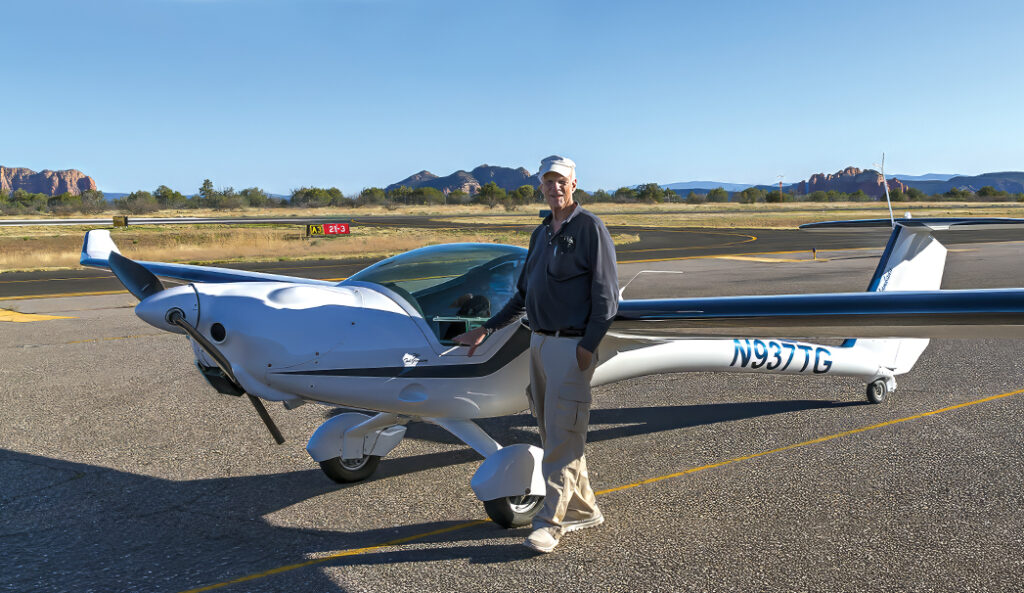
Photo 2
The challenges of photography from a sailplane is that since the plane is always descending the pilot is always working to keep it in the air, looking for lift (fuel) and spending time lining up the shots of the beautiful airscapes where I was flying. Lift is not everywhere, and thus there were limitations. After four sailplanes and about 1,800 hours flying them, I switched to a motorglider, which gave me the best of both worlds. Now I could self-launch and it felt like soaring, I could kill the engine after takeoff and soar or leave it on and spend hours doing photo shoots.
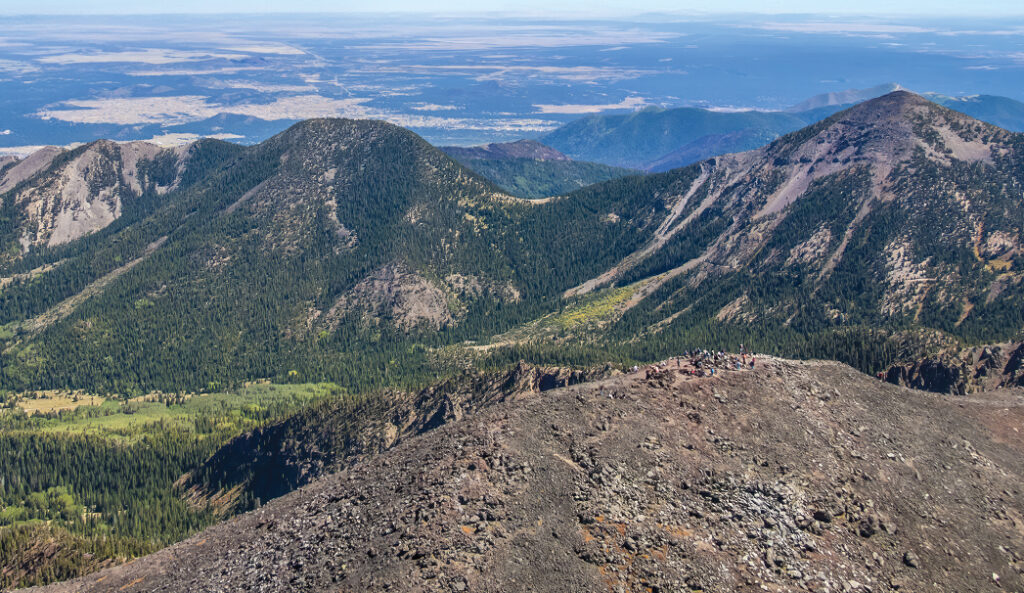
Photo 3
Mariah (my Lambada motorglider) was a three dimensional tripod. I had infinite possibilities to structure my photographs with the ultimate tool to line them up. Is the photograph of the mountain going to look best from 15,000 feet of altitude? What is the best angle? Where do I get the best light on the subject?
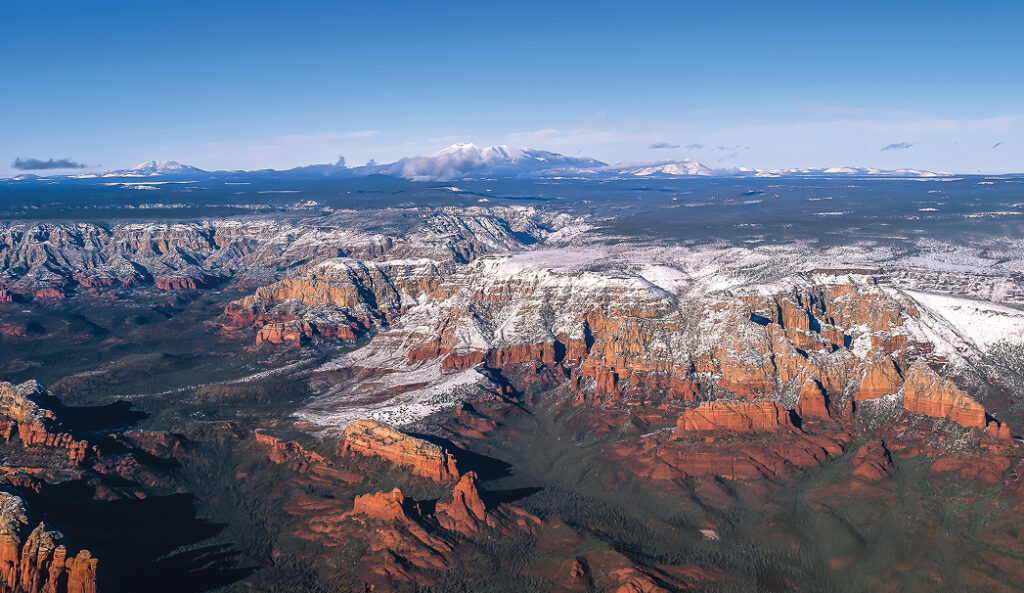
Photo 4
I loved the time in sailplanes and motorgliders. You become part of them and feel at home. My portfolio of aerial photographs has more than 15,000 air-scape photographs.
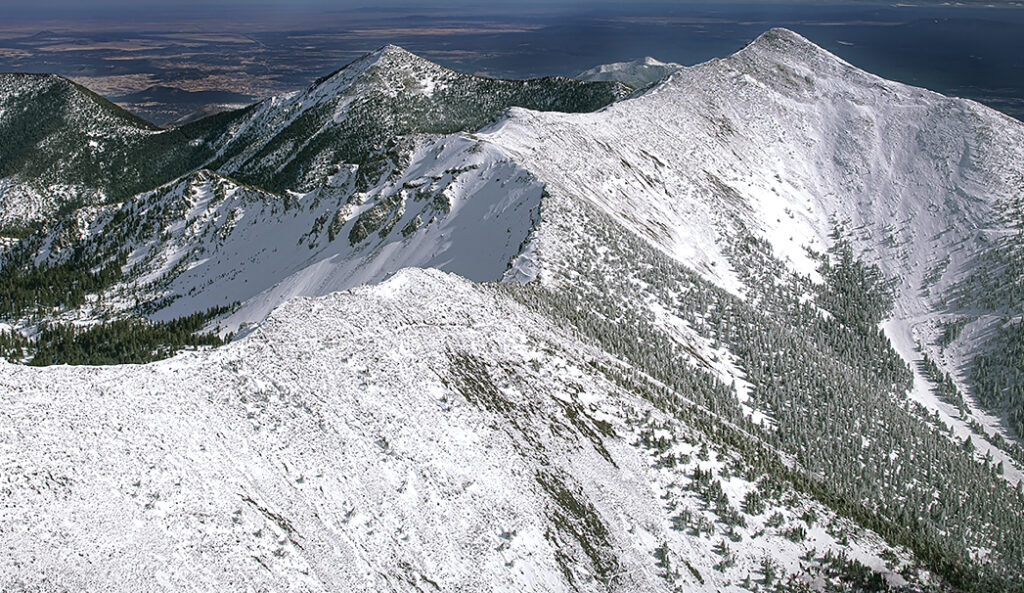
Photo 5
Photos: 1: HpH 304CZ high performance sailplane; 2: Lambada Motorglider; 3. Hikers on top of Humphreys Peak; 4: Snow on RR and plateau; 5. Snowbowl and Agassiz Peak.
![]()


